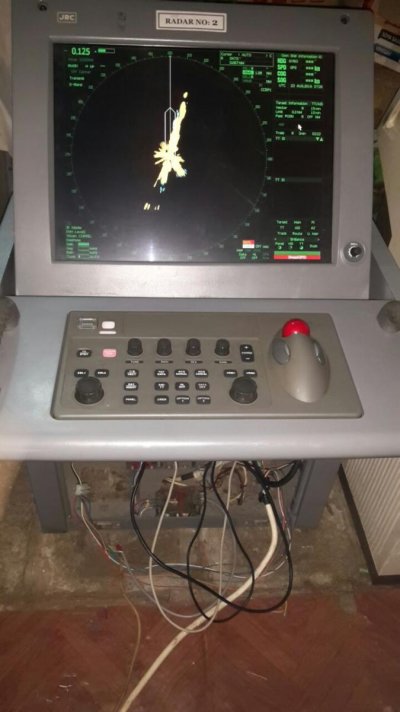I'm a big fan of dedicated radars, assuming you have the screen space and panel space for control console. Having dedicated knobs and buttons for control functions is really handy, and the track balls work really well in rough conditions where a touch screen is utterly useless. Wire the radar back to your chart plotter and the TTM message will show ARPA targets on your chart plotter.
But calling a radar "commercial" can be pretty ambiguous. They are either part of an integrated MFD/BB suite, or dedicated devices. The MFD/BB approach is a necessity in smaller boats with limited space for screens etc., but seem to bring with them a wealth of problems. And they are an all-or-nothing solution forcing you to buy the key components (chart plotter, radar, sounder) from a single manufacturer. If you decide you don't like the performance of one part, or want to upgrade one part down the road, you have to stick with the same vendor, or upgrade everything.
With dedicated components you can pick best of breed for each device, and integrate (though to a lesser degree) via industry standard interfaces. You also get control panels tailored to each device for quick and reliable access to key functions without hunting and pecking through menus.
So, for example, say you want to acquire an ARPA target on your radar. With an MFD touch screen you need to touch the target, hopefully hitting the right spot. if you are off an hit a neighboring AIS or ARPA target, the popup screen will be info on the target, not an Acquire menu. Once you finally hit the right spot, a menu pops up. Once again, you need to touch the Acquire Target menu item. Try doing this in rough conditions and you find it often takes a couple of tries.
With a dedicated radar, you brace you palm on the track ball frame. That stabilizes your hand relative to boat movement, and you getting thrashed around. You position the cursor over the target, then with your thumb you press the dedicated ACQ (Acquire Target) button and you are done. It's pretty much 100% successful every time, regardless of conditions.
The other things you will find different in dedicated radars is their certification for commercial use, and this might be what people mean when they say "commercial". There are various levels, and I'm frankly not familiar with them all other than IMO. The benefit of certification is that the radar has been tested against a set of performance requirements and shown to meet them. These include target detection, as well as ARPA acquisition time and accuracy of target tracking. My original Simrad radar system would never have passed the target tracking tests. But other non-certified radars (furuno for example) perform just as well as the dedicated radars.
You might want to check out Furuno's new FAR line. They are a re-vamp of the FAR2xx7 line and include a bunch of their new target tracking features, including fast target acquisition. A friend recently installed one and is very impressed with it. It also looks like the cost has dropped significantly and you might be able to get one new for close to the cost of a used JRC. Another thing to consider when looking at a used radar off a commercial ship is that those radars run all the time for years on end, so might be near EOL for the magnetron. If buying one, I would factor the cost of a magnetron replacement into the cost.



